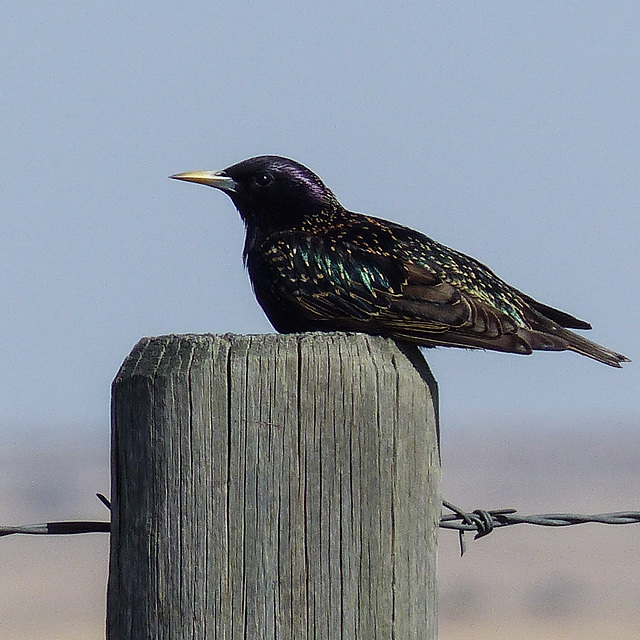Trumpeter Swans
Home for the Pigeons
Fluffed Pigeon feathers
Little red barn
Blue Morpho
Mossleigh grain elevators
Juicy snack for his babies
Teasel macro
Peekaboo
Subalpine Fir / Abies lasiocarpa
A posed Crow
Five in a row
Arrowwood grain elevator
A colourful guy
A touch of sacredness
Wood Duck pair
Springtime on the prairie
Growing older by the minute
Old barn and windmill
Abyss Pool, West Thumb Geyser Basin, Yellowstone
Beautiful catch
A touch of winter beauty
Building her nest
Julia Heliconian / Dryas iulia
What kind of horse am I
Western Meadowlark
Archived Globe Artichoke
Snuggling up to Mom
Yay, Superman!
Northern Shoveler / Anas clypeata
Little Prairie Church
Vibrant rays
The day before Christmas
Patterns in the fields
There's always a Chickadee
Nasturtium - childhood memories
Little green hearts
Colour palette
Tundra Swans
Dressed in gold
Bundle of fluff
Forgetmenot Pond
At the edge of the creek
Summer sunlight
Balance is a fine art
See also...
Keywords
Authorizations, license
-
Visible by: Everyone -
All rights reserved
-
274 visits
Iridescent beauty


This European Starling sat on this fence post long enough for me to take a handful of shots. Usually, I find they fly off straight away, so I was lucky this time. These birds need to be seen close in order to see the patterns and iridescent colours of their beautiful feathers. Taken on 14 April 2014, when I spent the day driving the backroads SE of Calgary with my daughter.
"First brought to North America by Shakespeare enthusiasts in the nineteenth century, European Starlings are now among the continent’s most numerous songbirds. They are stocky black birds with short tails, triangular wings, and long, pointed bills. Though they’re sometimes resented for their abundance and aggressiveness, they’re still dazzling birds when you get a good look. Covered in white spots during winter, they turn dark and glossy in summer. For much of the year, they wheel through the sky and mob lawns in big, noisy flocks." From allaboutbirds.
www.allaboutbirds.org/guide/european_starling/id
en.wikipedia.org/wiki/Common_Starling
"The success of the European Starling in North America is nothing less than phenomenal. Although estimates vary, it is commonly believed that a total of about 100 individuals was released into Central Park, in New York City, in 1890 and 1891. The entire North American population, now numbering more than 200 million and distributed across most of the continent, is derived from these few birds. This is arguably the most successful avian introduction to this continent. Although the European Starling is most frequently associated with disturbed areas created by man, it has had a significant impact on our native avifauna. In particular, it offers intense competition for nesting cavities and has had a detrimental effect on many native cavity-nesting species. Because of the starling’s abundance and association with humans, many aspects of its natural history are known in detail, from studies both in its native range and in areas to which it was introduced. It has also served as a model for studying basic avian biology. Recent research has done much to illuminate the mechanics of flight and control of the endocrine system (e.g. see Nicholls et al. 1988; Dial." From birdsofalberta.
birdsofalberta.com/List/detail.php?id=307et al. 1991)
flic.kr/p/ncipuR
"First brought to North America by Shakespeare enthusiasts in the nineteenth century, European Starlings are now among the continent’s most numerous songbirds. They are stocky black birds with short tails, triangular wings, and long, pointed bills. Though they’re sometimes resented for their abundance and aggressiveness, they’re still dazzling birds when you get a good look. Covered in white spots during winter, they turn dark and glossy in summer. For much of the year, they wheel through the sky and mob lawns in big, noisy flocks." From allaboutbirds.
www.allaboutbirds.org/guide/european_starling/id
en.wikipedia.org/wiki/Common_Starling
"The success of the European Starling in North America is nothing less than phenomenal. Although estimates vary, it is commonly believed that a total of about 100 individuals was released into Central Park, in New York City, in 1890 and 1891. The entire North American population, now numbering more than 200 million and distributed across most of the continent, is derived from these few birds. This is arguably the most successful avian introduction to this continent. Although the European Starling is most frequently associated with disturbed areas created by man, it has had a significant impact on our native avifauna. In particular, it offers intense competition for nesting cavities and has had a detrimental effect on many native cavity-nesting species. Because of the starling’s abundance and association with humans, many aspects of its natural history are known in detail, from studies both in its native range and in areas to which it was introduced. It has also served as a model for studying basic avian biology. Recent research has done much to illuminate the mechanics of flight and control of the endocrine system (e.g. see Nicholls et al. 1988; Dial." From birdsofalberta.
birdsofalberta.com/List/detail.php?id=307et al. 1991)
flic.kr/p/ncipuR
Chrissy, , have particularly liked this photo
- Keyboard shortcuts:
Jump to top
RSS feed- Latest comments - Subscribe to the comment feeds of this photo
- ipernity © 2007-2024
- Help & Contact
|
Club news
|
About ipernity
|
History |
ipernity Club & Prices |
Guide of good conduct
Donate | Group guidelines | Privacy policy | Terms of use | Statutes | In memoria -
Facebook
Twitter

Sign-in to write a comment.